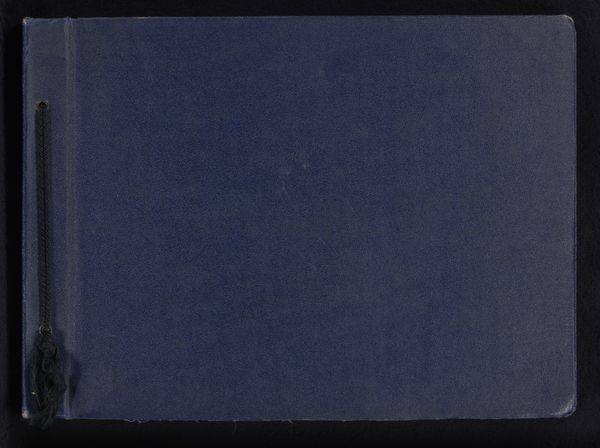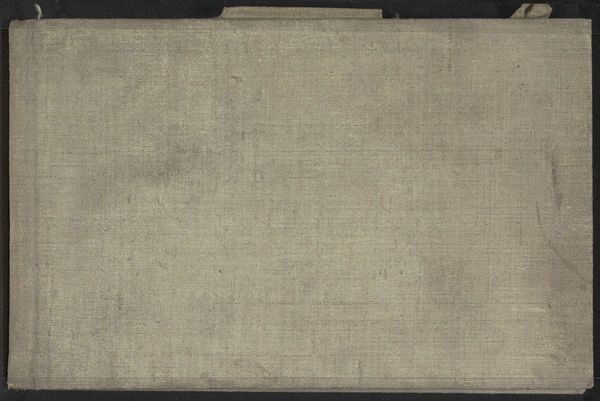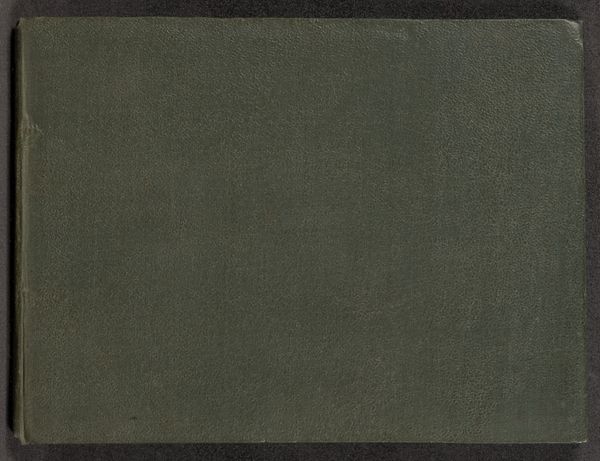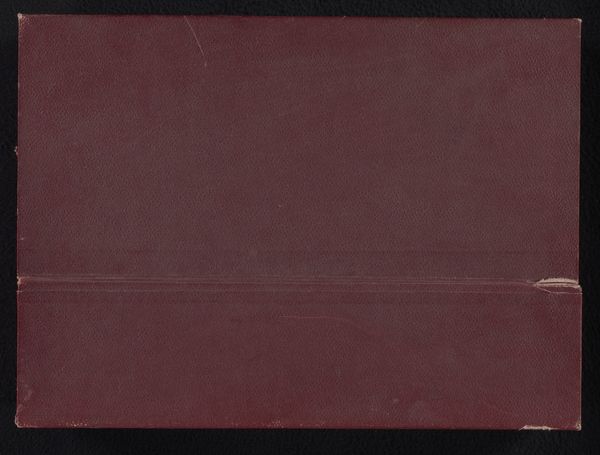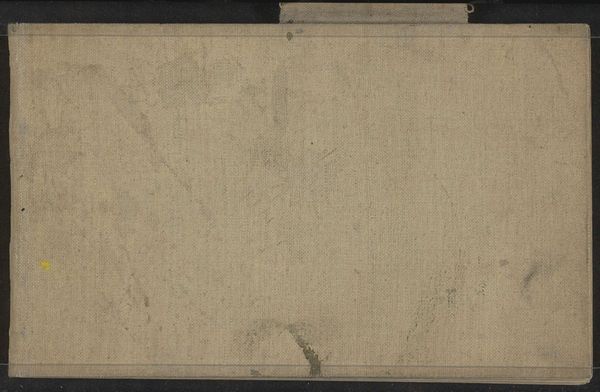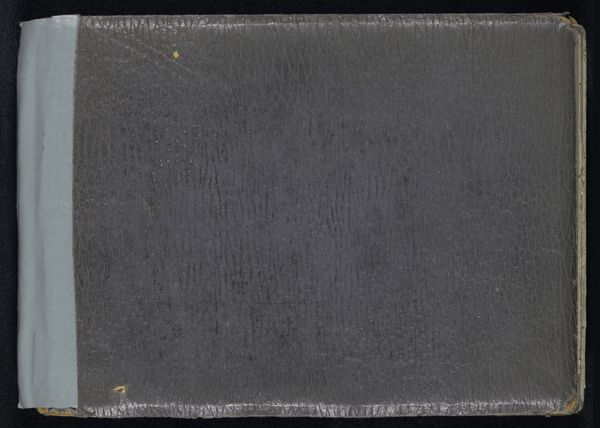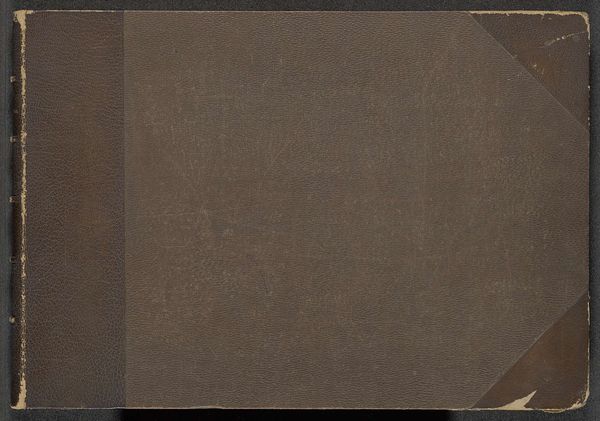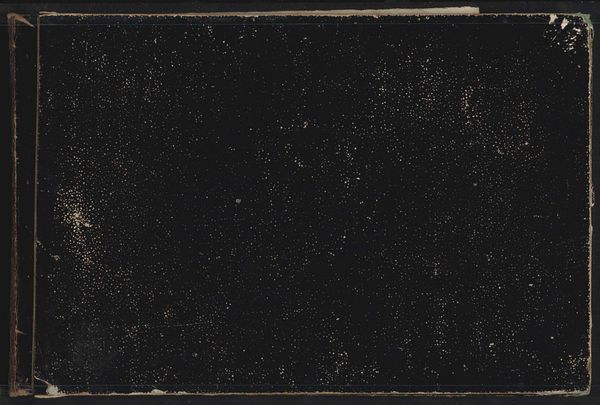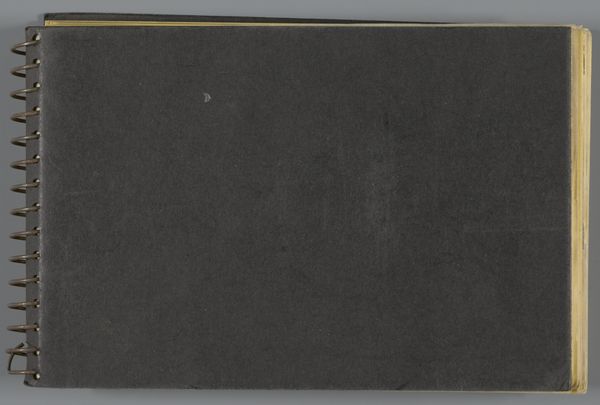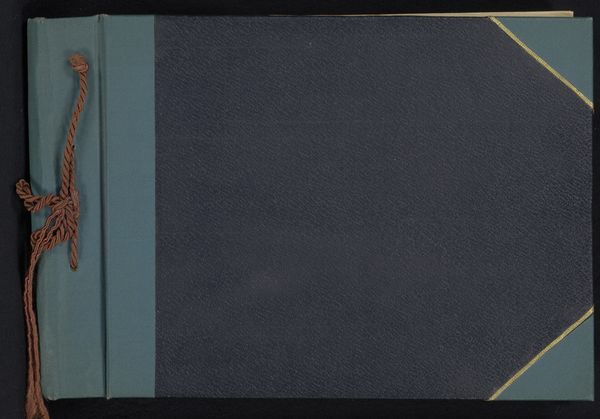
mixed-media, textile, photography
#
mixed-media
#
textile
#
abstract
#
photography
Dimensions: height 133 mm, width 235 mm, thickness 21 mm, width 471 mm
Copyright: Rijks Museum: Open Domain
Curator: Sobering, isn’t it? The immediate flatness of the composition—a near monochrome expanse, seemingly without variation. Editor: We are looking at what appears to be the cover of a mixed-media textile piece entitled "Marokko, Algiers, Tunis," by A.G.A. van Eelde, dating from 1927. This assemblage incorporates textile, photography and possibly other media. Curator: "Assemblage" implies such... layering. Here, however, the singular tone presses on the eye, resisting easy penetration. There’s a slight vertical linearity on the left side and an appealing bit of disintegration to the right side. The entire plane reads as a tight but unstable Gestalt. The texture alone prevents complete collapse. Editor: These North African locations, however, hint at narratives beyond this severe presentation. The 1920s witnessed intense colonial scrutiny of these regions. The textiles, the inclusion of photographs: Could these point to identity, resistance, or even just ethnographic documentation, abstracted through an artistic lens? Van Eelde remains a largely unknown figure; recovering these linkages presents a real challenge, not unlike reading a semiotic code. Curator: Interesting—considering van Eelde and her potential socio-political intention gives us more information with which to see beyond just its austere presence and tight formal closure. Yet, if we ignore the possibility of this “context” or potential “reading,” as you said, there remains a strong statement. Editor: But aren’t all artworks shaped by external factors? Even van Eelde’s aesthetic choice here is undeniably a reflection of her socio-historical positioning, in a complicated world filled with people, conflicts and political agendas. And if the textiles contain fragments, memories from Algiers and Tunis, surely we can’t separate them. Curator: Granted. The very materiality introduces implicit stories. I see the inherent paradox: this minimalist facade invites our gaze only to conceal possible layered meaning. Thank you. That definitely adds to my understanding and appreciation of the piece.
Comments
No comments
Be the first to comment and join the conversation on the ultimate creative platform.
